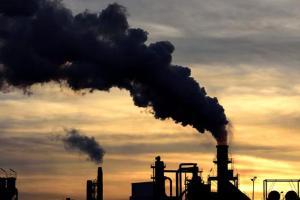The study found evidence that pedestrians walking along busy roadsides in Asian cities are exposed to up to 1.6 times higher fine particle levels than people in European and American cities

Representational Picture
Travelling by car in Delhi exposes people to black carbon levels five times higher than Europe and America, say scientists who found that Asian residents are exposed to nine times more air pollution than their Western counterparts.
ADVERTISEMENT
According to the World Health Organisation (WHO), about 88 percent of premature deaths in low- and middle-income countries in Asia can be attributed to air pollution.
The number of road vehicles in Beijing increased from 1.5 million in 2000 to more than 5 million in 2014 and the number in Delhi is expected to increase from 4.7 million in 2010 to 25.6 million by 2030.
In a study published in the journal Atmospheric Environment, researchers looked at studies of pollution exposure and concentration levels in Asian transport microenvironments (walking, driving, cycling, motorbike riding and bus riding).
Researchers from the University of Surrey in the UK focused on the levels of fine particles, black carbon produced by carbon-rich fuels such as gasoline and diesel fuel, and ultrafine particles (UFP) small enough to travel deep into a citizen's lungs.
The study found evidence that pedestrians walking along busy roadsides in Asian cities are exposed to up to 1.6 times higher fine particle levels than people in European and American cities.
Car drivers in Asia are exposed to up to nine times more pollution than Europeans and Americans, while black carbon levels were seven times higher for Asian pedestrians than Americans.
The study reported that in Hong Kong, UFP levels were up to four times higher than in cities in Europe. In New Delhi, average black carbon concentration in cars was up to five times higher compared to Europe or North America.
"Care should be taken in directly comparing and contrasting the results of different studies due to varied amounts of information available on personal exposure in studied regions," said Prashant Kumar, Director of the Global Centre for Clean Air Research at the University of Surrey.
However, there is compelling evidence that people travelling in urban areas in Asian cities are being exposed to a significantly higher level of air pollution.
"A noticeable gap still exists in studies that focus on the Asian population living in rural, semi-rural or smaller cities, where pollution exposure could be as harmful as in urban areas owing to several unattended sources," said Kumar.
"There were rare data on cyclist and motorcyclist exposure despite substantial use in Asian cities; studies were limited for other transport modes too," he said.
"It is important that this knowledge gap is filled if we are to get a complete picture of the pollution exposure challenge that the Asian population faces," he added.
"There are increasing efforts in Asia to install properly designed and calibrated portable monitoring systems to measure actual exposures, using the data to better understand why high exposures occur and how to prevent them," said Chris Frey of North Carolina State University in the US.
"These measurements of personal exposures will help individuals, businesses, and governments to develop and implement strategies to reduce such exposures," said Frey.
Catch up on all the latest Crime, National, International and Hatke news here. Also download the new mid-day Android and iOS apps to get latest updates
This story has been sourced from a third party syndicated feed, agencies. Mid-day accepts no responsibility or liability for its dependability, trustworthiness, reliability and data of the text. Mid-day management/mid-day.com reserves the sole right to alter, delete or remove (without notice) the content in its absolute discretion for any reason whatsoever
 Subscribe today by clicking the link and stay updated with the latest news!" Click here!
Subscribe today by clicking the link and stay updated with the latest news!" Click here!






